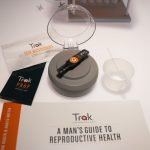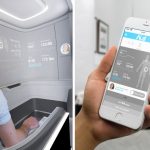WA State’s Healthcare Transformation Checkup: How are we feeling today?

We all know (or should know by now) that healthcare is undergoing a historic transformation into a digital consumer service. Consumers will soon expect to comparison shop health providers the same as they would for travel, banking, real estate or consumer goods. Health providers that develop the right formula of value—publishing reference pricing and outcomes data, for example—and innovation—such as next-gen health and wellness tools and precision medical treatments—stand to make the biggest gains.
As impressive as all these upcoming technical innovations are, consumers are simultaneously speeding towards staggeringly expensive healthcare costs and high-deductible health plans. So which is more important to healthcare stakeholders, technological innovations or cost control? Can the former lead to the latter?
As this new healthcare innovation world reveals itself, it’s increasingly clear that healthcare stakeholders need to view innovations through a “quad aim” prism of lowered costs, improved care, as well as more satisfied patients and providers at the same time. Innovations that fail to hit the quad aim, at least in the short term, may have a very difficult time making it to market.
Consumers, governments, and employers need to keep the pressure on to make sure quad aim healthcare benefits are realized. Data transparency for things such as reference pricing for services, care outcomes, and consumer satisfaction information are essential to successful healthcare transformation.
According to Bessemer Venture Partners, this consumer, digital transformation of healthcare will result in $ 1 trillion of economic value changing hands.
There’s a lot at stake, and much to gain for communities that get this right. Given the Seattle region’s world class expertise in consumer engagement (Amazon, Starbucks, Costco), cloud computing (Amazon and Microsoft), and life science research (University of Washington, Fred Hutchinson Cancer Research Center, the Institute for Systems Biology, Allen Institute for Brain Science, and many others), I’ve been wondering how our region compares to other innovation clusters pursuing this opportunity.
For this analysis, I reviewed five primary activities in our State:
- Life science research: Are we creating new care models and tools?
- Health system/insurance engagement: Are the health systems and insurers engaged and committed to testing, validating, and scaling new models?
- Government/employer engagement: Are our state and local governments and large employers providing incentives to drive innovation forward?
- Startups and innovation investments: Do we have the entrepreneurs and investment capital needed to exploit opportunities and create next-generation healthcare jobs?
- People and education: Do we have people with the passion, know-how, and expertise to deliver this precision health and medicine future?
Here’s what I’ve learned so far.
Life science research: Our state ranks 13th in research funding according to Research America. According to Genetic Engineering News, UW ranks fourth in NIH funding.
Grade: A—Clearly life science research continues to be a bright spot in our state.
Health system/insurance engagement: I reviewed programs currently under development at Cambia Grove, Providence Innovation Center and Fund, UW, and Puget Sound High Value Network. Cambia and Providence were the two first movers in our area to develop an innovation agenda. Both programs have a lot to share about the opportunities and challenges with healthcare innovation. Although both programs offer great potential, it’s hard to assess what kind of impact they will ultimately have at this early stage. UW Medicine is paying close attention to innovation and is experimenting with programs such as palliative care, telemedicine, and the recently launched Primary Care Innovation Lab.
The Puget Sound High Value Network is a new entrant with innovation on the agenda. They have a great opportunity to make an impact in care coordination as well as develop innovations for use in their network. We’ll see how this story unfolds.
To get a sense of where Washington ranks in terms of healthcare costs, we still fall in the middle of the pack (ranked 27th in the nation) although some systems are reporting they’ve been able to reduce costs back to 2009 rates which is very encouraging.
Grade: Too early to grade
Government/employer engagement: For this analysis, I looked into the state’s $ 65 million, five-year award to set up an Accountable Care Network funded by the Centers for Medicare & Medicaid Services. Since CMS pays 20 cents of every healthcare dollar (total government healthcare spending is 65 cents of every dollar), they have a vested interest in ensuring quad aim innovations are successful.
CMS is actively accelerating innovations related to: broad payment and practice reform in primary care and specialty care; care coordination between providers of services and suppliers; community-based health teams to support chronic care management; and, improved quality and reduced cost through collaborations that support practice transformation.
Although this work is still fairly new in Washington, there is growing evidence that this program is on the right track with health systems in eastern and central Washington.
I’ve also been very impressed with the work of the state-sponsored Bree Collaborative. Bree Collaborative was formed in 2011 by request of then-Gov. Christine Gregoire to look for ways to improve the quality, consistency, and cost effectiveness of care.
On the employer side, The Boeing Company has certainly been forward thinking about the accountable care organization model, and the City of Kirkland is pushing forward with value-based primary care through Vera Whole Health.
Grade: B
Startups and innovation investments: This topic continues to be good news/bad news for Washington State.
The good news is that we do have some real innovators in our community. To name a few, companies like Juno and Adaptive Biotechnologies are leading the way in biotech. Accolade, Limeade, Vera Whole Health, and Arivale are taking on healthcare care transformation. And IT innovators such as Carena Health, TransformativeMed, and Clario Medical—the latter two are clients of my consulting firm—are working hard to improve clinical service specialties.
Established funds such as Arch Venture Partners, Maveron, Cambia Health Solutions, Providence Ventures, and Columbia Pacific Management continue to lead the way on new investments. We are also seeing new funds and angel groups forming such as Dave Chases’s QuadAim Fund and Tobin Arthur’s AngelMD. Additionally, we’re seeing more investment activities coming from UW, Fred Hutch, ISB, and support for innovation in the South Sound at Madigan Army Medical Center, UW Tacoma, and MultiCare.
On the national funding stage, Washington state companies didn’t fare as well. Only 5 percent of the funding from the top 20 healthcare technology investors ended up here (at least as of the end of 2014). This may be in part that our innovation portfolio is not far enough down the commercialization track to warrant bigger investment dollars. It may also be that our local companies are not pitching the larger investment funds. Either way, there seems to be a disconnection between our high volume of research funding and our low commercialization output.
Grade: C+—I know our community is capable of better work!
People and education: For this analysis, I reviewed our local startups, their employee base, and funding stage with the help of Kevin Cable at Cascadia Capital. I also researched and met with our local educational institutions developing new curriculum aimed at educating next-generation entrepreneurs, digital marketing experts, and sales professionals. This is another good news/bad news story for our region.
The good news is that I continue to be impressed with the smart, talented, and motivated individuals I’ve met at UW programs such as Engineering in Medicine and the Healthcare Innovation Challenge. We have incredible talent coming through the pipeline.
The bad news is that healthcare innovation job opportunities are still lacking and I’m worried the talent we are educating might not stay here. We also seem to fall short on the fully engaged, “been there/done that” commercialization professionals needed to take products to market. The shortage of experienced people and capital seem correlated. We need a bigger, bolder innovation pipeline to attract the later stage talent and capital we need for our region to compete on a national level.
Grade: C+
Summary Recommendations:
We have potential for quick wins with government/employer incentives and health systems opening up to more pilot innovations:
- More incentive dollars from governments and employers could move quad aim innovation faster in our health systems. It’s important to remember that federal incentives paid for health records to be digitized. We are now at 99 percent coverage. Incentives do work. In exchange for more incentives, I would push for transparent and easy access to reference pricing and outcomes data to make sure consumers can make informed choices on where they get affordable, high-quality care.
- I would also love to see our Washington health systems learn how to run pilot tests more efficiently. Philadelphia, Nashville, and Chicago are forging ahead in this area. We should study those models and apply those lessons quickly.
- We also need to work much harder to convince startups, commercialization professionals, and investors that Washington State is a credible place to create and grow a successful healthcare business. To accomplish this, we need better coordination between state government, employers, health systems, and insurers committed to testing, purchasing and scaling quad aim innovations such as software, devices, diagnostics, and drugs.
I have no doubt with better coordination and better aligned incentives, we can attract great startups, investors, and commercialization professionals to our community. When innovation and commercialization are done right, we know the payoff for our region will pay dividends for decades to come.
(30)













